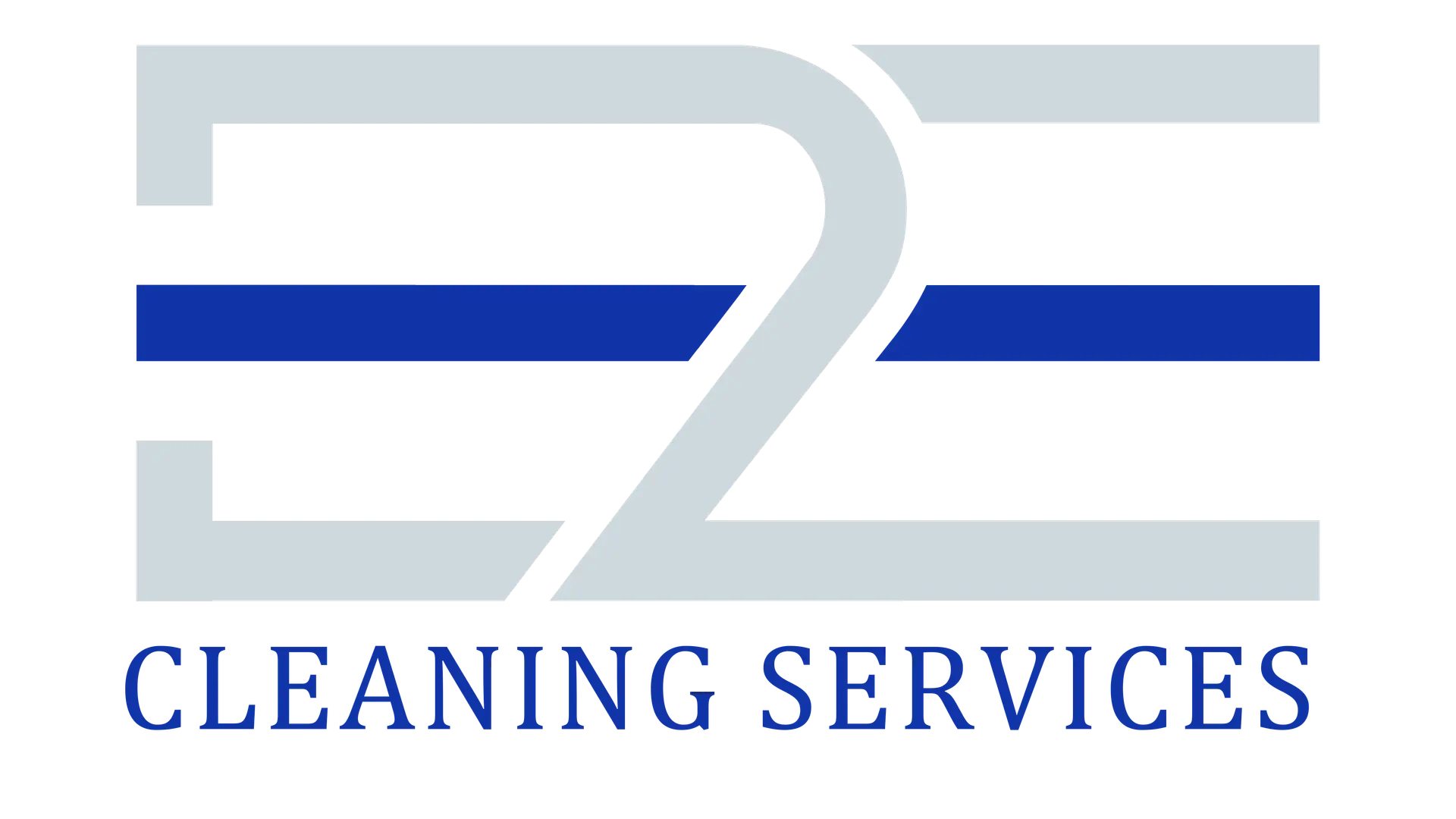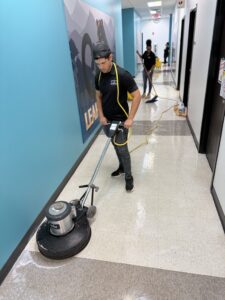In Florida, the healthcare industry is still working on the issues of healthcare associated infections (HAIs) and Tampa Bay medical facilities must adhere to strict sanitization guidelines. This is a comprehensive guide to the sanitization landscape today, regulatory frameworks, core infection control protocols, 24/7 facility operations management, staff safety and training, patient safety measures, quality assurance and technology integration strategies.
Through the implementation of these best practices, Tampa Bay medical facilities will see their patient outcomes rise, as well as their ratings remain on high, and persist adherence with state and federal regulations.
Florida’s Current Healthcare Sanitization Landscape
In Florida, sanitation in the healthcare arena has become a much more high-profile focus for hospitals and other facilities as prevention of healthcare associated infections (HAIs) and providing a safe, sterile environment for patients, staff and visitors is paramount.
One in 25 hospital patients in the state has a healthcare associated infection, a sobering statistic that makes the need for robust sanitization protocols all the more important, according to the Florida Department of Health.
A clean and hygienic establishment is crucial for a healthcare facility and, while inefficiency in its operations will affect its image and to an extent its reputation, a big issue is what a clean establishment does to a patient’s health. In an era where patient satisfaction scores and facility ratings play a huge role in healthcare decision making, Tampa Bay medical facilities must place sanitization as a key component of their service.
Regulatory Framework: How to Ensure Compliance and Safety.
Florida’s healthcare industry is subject to a broad regulatory regime in order to protect patients and maintain the highest level of cleanliness and hygiene. It is the Florida Department of Health who take part in enforcing sanitation rules and guidelines to protect the public from food borne illnesses and other ongoing health hazards.
As an added bonus, in Tampa Bay, healthcare facilities are already subject to state regulations, and must conform with nationally recognized standards set forth by the Joint Commission, which accredits and certifies healthcare organizations. From infection control and prevention to many other areas, these standards are important, not only to maintain accreditation, but also, as vital to assuring quality patient care.
In addition, good guidance on infection control in healthcare settings from the Center for Disease Control and Prevention (CDC) reminds us about hand hygiene, environmental cleaning, and sterilizing of medical equipment as important basics. Tampa Bay medical facilities can rest assured that they’re practicing cleanliness and safety up to par by following the same sanitization protocols we outline with these authoritative guidelines.
Core Infection Control Protocols: Comprehensive Approaches to Preventing the Spread of Infections
The cornerstone to healthcare sanitizations efforts are effective infection control protocols. A variety of practices and procedures intended to prevent the spread of infections through health care facilities are covered in these protocols. At the heart of these protocols are the following key elements:
- Hand Hygiene Protocols: Washing hands often and regularly using alcohol based sanitizers helps reduce transmitting pathogens from one surface to another and among persons. To decrease the risk of infection whole healthcare facilities must ensure and implement strict hand hygiene protocols for staff, patients and visitors.
- Environmental Cleaning Schedules: Disinfection of surfaces and materials that may be contaminated with infection requires routine, terminal, and scheduled cleaning procedures. Thus these schedules should be customized with each healthcare facilities specific needs such as traffic of patients, at risk areas and the presence of infectious diseases.
- Medical Equipment Sterilization: To prevent any potential contamination all medical equipment and instruments used for patient care come into contact with have to be subject to extremely rigorous sterilization processes. In other words this can be done by utilizing steam under pressure (autoclaving), dry heat or an EPA registered disinfectant/sterilant.
- Waste Management Procedures: In order to best uphold cross contamination and minimizing exposure to pathogens, proper disposing of medical wastes such as sharps and infectious materials is essential. The healthcare facilities must use comprehensive waste management protocols that conform to both local, state and national laws.
If Tampa Bay medical facilities adhere to these core infection control protocols, they can greatly decrease the risk of healthcare associated infections and make for a safe environment for patients, staff and visitors.
Learn about our Clinic Sanitization Services. Click Here
24/7 Facility Operations Management: Maintaining Sanitization Standards Around the Clock
Healthcare facilities are going round the clock and ensuring the sanitization standards is a package of treatments to this challenge of sustained working. Effective 24/7 facility operations management includes the following key elements
- Shift-Based Cleaning Protocols: Since the cleaning schedules must correlate to shift changes so continuous sanitation efforts are going on throughout the facility. In some cases this could mean implementing overlapping shifts or dedicated cleaning teams to ensure continuous coverage.
- Emergency Response Sanitization: All hands must know what to do if there is a spill, accidents or any incident susceptible to contamination. These protocols should contain specific procedures to rapidly respond to and contain infections, and procedures necessary to decontaminate infections.
- High-Traffic Area Maintenance: In areas with high volume of traffic such as waiting rooms, lobbies and corridors where contamination and spread of pathogen is so high. These floor surfaces of high traffic areas need to be cleaned and sanitized as often as possible to keep a safe and hygienic place.
- Operating Room Turnover Procedures: Sanitization protocols are most critical in all operating rooms of a healthcare facility to keep surgical site infections at bay. Surgical procedures must be performed so that thorough cleaning and disinfection procedures are followed between them to create a sterile environment for each patient.
Medical facilities can guarantee that sanitization standards are always being met, even during high activity or emergency times by implementing robust 24/7 facility operations management strategies.
Staff Safety and Training: Making Healthcare Workers Effective Sanitizers
Since Healthcare workers are on the front line of infection control, keeping these workers safe and well trained is just as important to proper sanitization practices. Tampa Bay medical facilities must prioritize the following staff safety and training measures:
- Personal Protective Equipment (PPE) Requirements: Because healthcare workers are at an increased risk of coming into contact with infectious agents, the use of PPE (gloves, masks and gowns) is critical. PPE must be available, and staff must be trained, in its use and disposal.
- Chemical Handling Protocols: Cleaning and disinfection both typically use strong chemicals that can be dangerous to a person’s health when not done with proper care. Cleaning chemicals and disinfectants must be handled, stored and used safely by staff who are fully trained in their use.
- Cross-Contamination Prevention: Prevention of cross contamination is an important lesson that healthcare workers must know. This includes how to correctly wash your hands, use PPE and how to handle contaminated material appropriately.
- Ongoing Certification Requirements: Sanitization protocols and best practice are always evolving and it must be ensured that healthcare facilities always have the latest development in these protocols and best practice on to the staff practicing them. Training and certification programs should be conducted regularly for the workforce to be always knowledge, and skilled.
Doing your part for staff safety and training will create a culture of diligence and professionalism in Tampa Bay medical facilities where sanitization protocols will be adhered to lock stock and barrel and the infection risks minimized.
Patient Safety Measures: Prioritizing the Well-being of Tampa Bay’s Healthcare Community
Sanitization efforts are mainly aimed at preventing spread of infections, but they also protect patients. Tampa Bay medical facilities must implement the following patient safety measures:
- Isolation Room Protocols: Patients with highly contagious or infectious diseases will need to be isolated to stop the disease from spreading. Strict protocols around the use of PPE, enhanced cleaning and restricted access means isolation rooms are difficult spaces.
- Visitor Management: Because visitors can inadvertently bring infectious agents into a healthcare facility, visitor management is an important aspect of patient safety. Visitor policies at facilities should include hand hygiene, PPE and access restriction to high risk areas.
- High-Risk Area Protocols: Some healthcare facilities are more likely to become infected areas within the healthcare facilities like a patient admitted to intensive care units or operating rooms is more likely to have issues with infection. In these high risk areas enhanced cleaning and disinfection protocols must be in place to maintain a sterile environment.
- Immunocompromised Patient Considerations: However, people with weakened immune systems, for example people getting chemotherapy, or who have had organ transplants, are particularly vulnerable to infections. These patients are particularly susceptible and special precautions, namely PPE application, special cleaning procedure and strict visitor policy must be applied to protect.
Prioritizing patient safety measures can show Tampa Bay medical facility’s commitment towards high quality care and their healthcare community well being.
Quality Assurance: Continuous Monitoring and Improving of Sanitization Practice
To be good at effective sanitization practice, it takes commitment to monitor and to always improve on.
Tampa Bay medical facilities should implement the following quality assurance measures:
- Monitoring Systems: Cleaning and disinfection practices must be continuously monitored to ensure that protocols are being followed. Direct observation, audits and automated monitoring systems are all ways this can be done.
- Documentation Requirements: However, quality assurance of heating, cooling, and disinfection activities require complete and accurate documentation of those activities. Standardized documentation procedures should be implemented in facilities to achieve consistency and for the sake of data analysis.
- Audit Procedures: Sanitization protocols should be evaluated by regular audits, to see if modifications in the sanitization protocols should be implemented. Trained personnel should perform these audits and they should include all aspects of the facility’s sanitization effort.
- Corrective Action Protocols: Corrective Action Protocols must exist to correct non compliance or deficiencies when they are identified. It should set forth in these same protocols specific steps leading to remediation of the anomaly, to training of the staff involved such that the anomaly does not recur, and ongoing monitoring to assure continued compliance.
Tampa Bay medical facilities can still maintain effective, efficient, and inline with the most recent industry standards and regulations sanitization practices by accepting a continuous improvement culture and employing strong quality assurance processes.
Technology Integration: Innovation for Enhanced Sanitization Efforts
With the healthcare industry changing, the use of innovative technology can certainly help with sanitization in Tampa Bay medical facilities.
Some of the key technologies to consider include:
- Automated Cleaning Systems: In high traffic areas, robotic floor scrubbers and ultraviolet (UV) light disinfection robots are an automated cleaning system used to improve efficiency and effectiveness. They can be run continuously to minimize the chance of cross contamination and will enable consistent sanitization.
- UV Disinfection Technology: UV light has been shown to be a good disinfectant in high risk areas such as operating rooms and isolation rooms. The use of UV disinfection technology as additional sanitization later is potential complement to traditional cleaning and disinfection.
- Monitoring Software: We can use software solutions to track the cleaning and disinfection activities in place that protocols are followed, and what areas need more attention. Wastes in systems can also be identified both during and after implementation, and these systems can also be used for data analysis and reporting to support continuous improvement efforts.
- Documentation Platforms: Recording and storing cleaning and disinfection data becomes streamlined and error free as utilizing the digital documentation platforms. This also makes the cleaning and disinfection data accessible to online audits and maintaining quality of any potential data.
Tampa Bay medical facilities can improve efficiency, accuracy and cleanliness through these technologies, which integrated into their sanitization strategies will result in a better patient outcome and higher facilities ratings.
Tampa Bay’s Safe and Hygienic Healthcare Environment
Tampa Bay’s healthcare sanitization landscape is fueled by the need to prevent healthcare associated infections, maintain high facility ratings and keep patients safe.
Through adherence to the detailed policies enumerated in this guide, medical facilities in the area can create a clean and careful culture that touches every portion of the enterprise.
Fundamentals of a Safe and Hygienic Healthcare Environment is built on robust sanitization protocols including hand hygiene and environmental cleaning, sterilization of medical equipment and waste management. When paired with successful 24/7 facility operations management, staff safety and training, patient safety measures and quality assurance practices, Tampa Bay medical facilities have the opportunity to create an environment focused on contagion control and fostering good patient outcomes.
In addition, innovative technologies can help fortify sanitation efforts, and assist with continuous improvement at the same time. UV disinfection, monitoring and documentation via software and digital platforms and embracing automation all allow medical facilities the ability to focus less on processes and more on the patients.
In the ever changing healthcare industry, Tampa Bay medical facilities must be vigilant and proactive in sanitizing their facilities.
A safe, hygienic healthcare environment is born of diligence, attention to detail, and unrelenting commitment to best practices along the way.
With the guidelines provided in this comprehensive guide, Tampa Bay medical facilities can be assured that they are meeting, and exceeding, the expectations of patients, regulatory bodies and the community at large.






